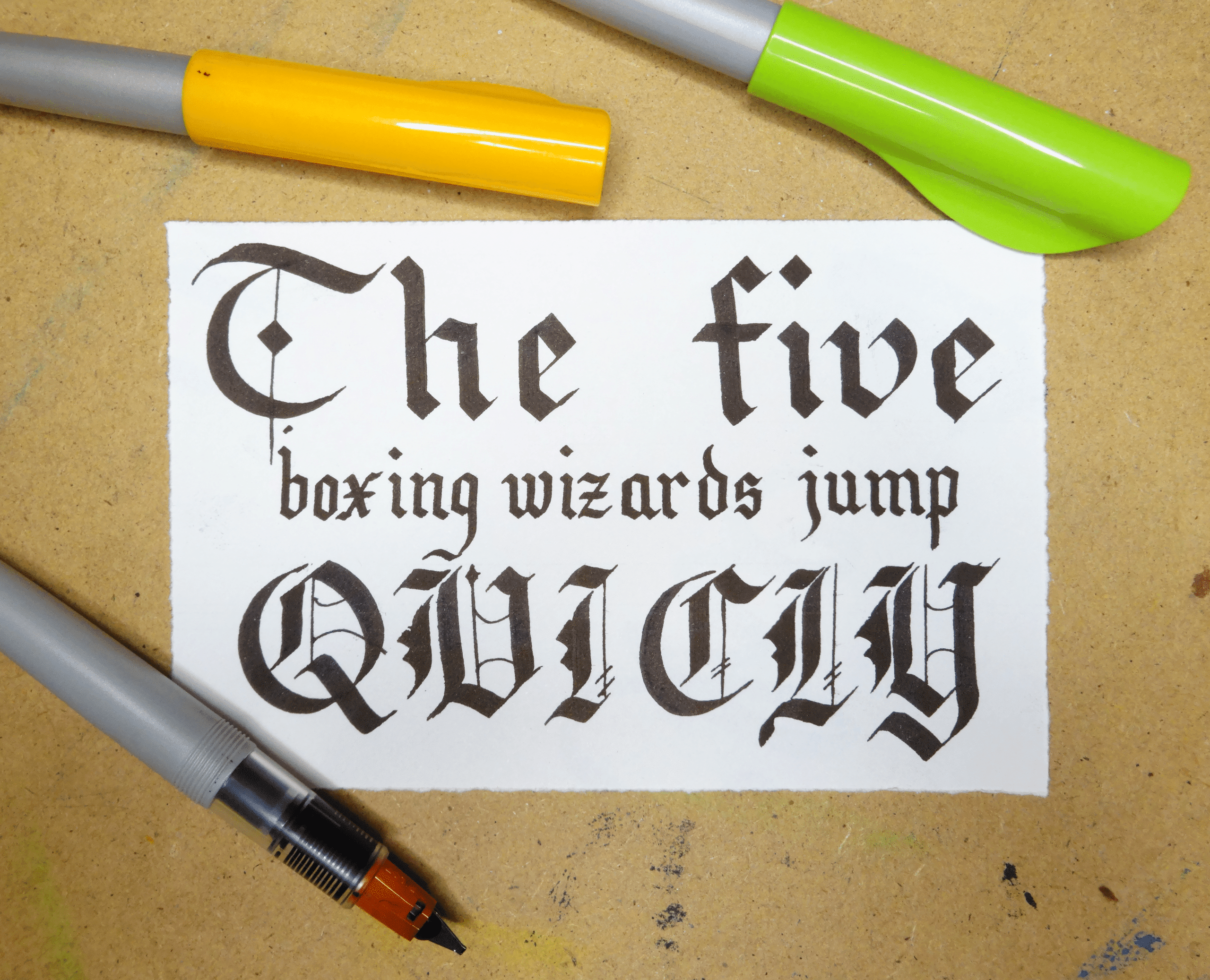Ancient Art of Calligraphy: Mastering the Skill
Small D Calligraphy

In an age of digital typewriters and computers, it may seem surprising that people still practice calligraphy. But it’s true that a lot of people are drawn to this ancient art.
We love the melded styles, clear composition and little loops in this gorgeous exemplar by Cristin! It proves that simplicity really is beautiful and showcases great skill.
Basics
A good calligrapher knows how to combine or connect their strokes and letters. They also know how to create consistent letter anatomy. Having all of these elements in place will lead to cohesive lettering and the ability to make words.
This Blackletter exemplar by Carol is a beautiful example of an alphabet written in a modern calligraphy style, Textura Quadrata (also called Gothic or Blackletter). Notice how she cares for the hairline of the exit stroke and the way that it lays on the body of the letter.
When you are learning calligraphy, it is important to remember that each letter has its own unique shape. This is especially true for the lowercase d. The entrance stroke should begin smoothly, and not too low on the body of the letter. The shade of the body should also be parallel to the slant to balance the letter out and avoid making it too bottom heavy. Also note that the last stroke on the body of the letter dips below the rest, giving it a bouncy appearance.
Materials
Modern calligraphy is often written with a brush pen. This is a fun and creative way to add a contemporary flair to hand lettering, but there are many different styles you can try. Check out this playful bouncing alphabet by Mai for example!
You’ll need a nib holder (also called a pen) and some ink. You can find good quality ones online or at art stores. Alternatively, you can make your own for a custom nib size and a more personalized style.
You’ll also need some paper, though you don’t necessarily need special calligraphy paper. A Rhodia notepad or standard practice paper will work fine. Alternatively, you can make your own paper with a homemade pulp blend to get deckled edges and unique textures. A wide range of inks can be used for calligraphy, but the best choice depends on the particular style you’re trying to learn and your writing surface – a sloping board is ideal for pointed pen calligraphy like copperplate or Spencerian, but brush calligraphy works just fine flat.
Techniques
Using pointed pen calligraphy requires some practice, but you can get a feel for it by sketching out the letterforms. This helps you concentrate on the art of creating beautiful letters rather than getting caught up in trying to make them look perfect right away.
If you want to learn calligraphy for a particular reason, like writing love notes or invitations, try practicing first with pencil. This will give you the foundation you need to improve with your brush or nib.
Another helpful tip is to trace over our artist’s work. This will help you get a sense for how thick or thin your strokes should be. Try to keep a consistent weight throughout your letterforms, especially when it comes to the full pressure stroke, which looks like a shaded parallelogram slanted at an angle.
You can find many more examples of our artists’ gorgeous pointed pen calligraphy by visiting the gallery on PrintShop by Designhill. This website is an easy-to-use online platform that allows you to sell your own handwriting artwork and earn a profit!
Practice
As with any skill, palaeography requires a lot of practice to improve. Some aspects may seem difficult at first, but they will come with time if you are patient and persistent. Practice with different pens, paper types and pressure to see how these factors affect your handwriting.
This calligraphy alphabet is an example of a Blackletter style, also called Textura Quadrata or Gothic. The writer used a broad nib and added an intricate amount of detail to her letters.
This modern calligraphy alphabet features a unique slant and flowing strokes, perfect for showcasing the letter’s personality. The writer, Mai, incorporated delicate flourishes and color distinction into her composition to create an eye-catching piece of art!
Leave a Reply